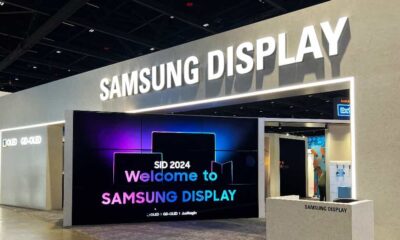Business
Samsung Display and Apple canceled their 10.86-inch iPad OLED display project

Apple was reportedly worked with Samsung on the tablet’s OLED panel. That came as no surprise as Samsung is a leading provider of OLED displays. However, there seems to have been a change in strategy.
According to the latest info, Apple and Samsung Display have canceled their joint project to make a 10.86-inch OLED iPad. The tablet was originally scheduled for launch in 2022 and would be Cupertino’s first iPad to play OLED panel.
The project has been suspended due to a single OLED panel stack structure or profit issues or both. Single stack refers to a widely used OLED panel building where a red, green, and blue layer forms a single layer of extraction.
Join Sammy Fans on Telegram
Apple has requested the creation of two stacks instead of the OLED panel it wanted to use on its iPad. The structure holds two layers of red, blue, and blue discharge in one place. This doubles the brightness and increases the life of the panel by up to four times.
Apple has been looking for this as tablets are often used longer by consumers than smartphones. Without the request, Samsung Display has suggested the formation of a single stack. The manufacturer of the display panel, the largest OLED panel manufacturer in the world, so far has only one stack structure designed for sale.
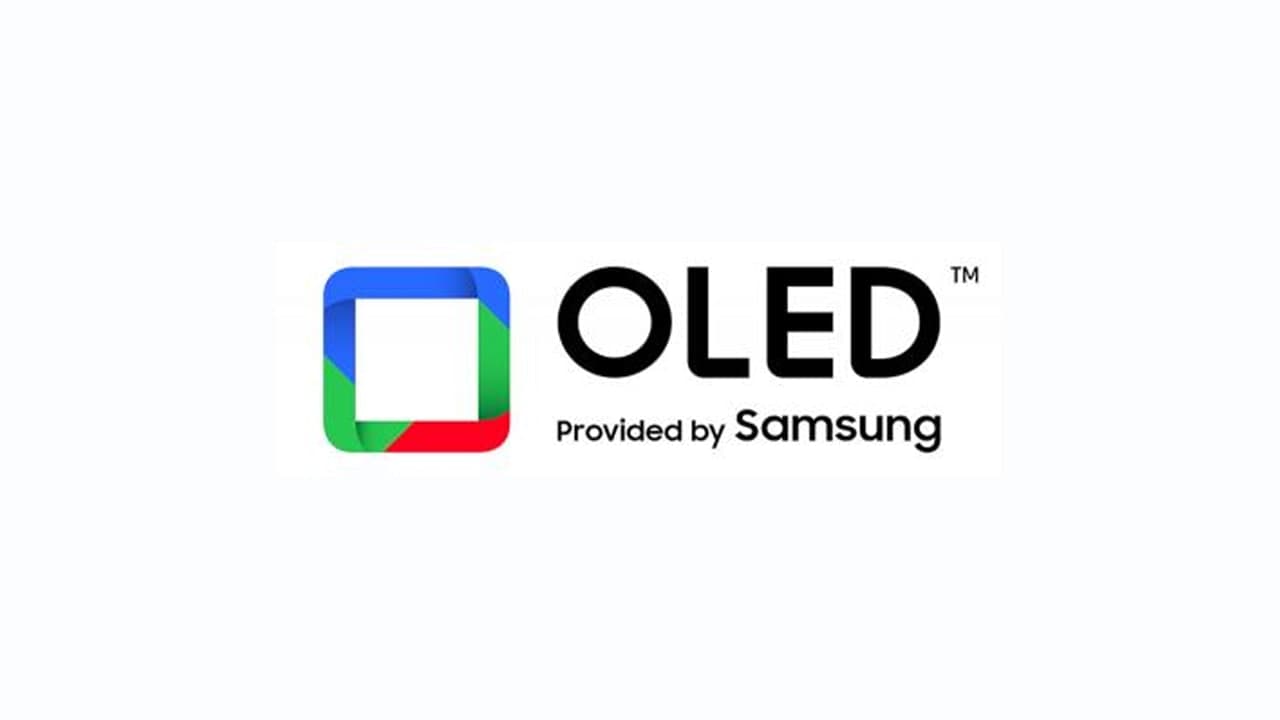
Apple has continued to insist that two stacks are being built, people say. The LG Display currently operates a two-stack structure on its OLED panels aimed at the automotive market. But the company currently has limited production capacity when it comes to OLED panels for IT systems.
Technology Apple plans for its two OLED iPads, one of which is likely to be 12.9-inch size introduced in 2023 or 2024 is also different from the one designed for the 10.86-inch OLED iPad.
Apple plans to both use a two-stage design and a thin-film transistor (TFT) low-temperature polycrystalline oxide (LTPO) for two OLED iPads. With the 10.86-inch OLED iPad, it was a low-temperature TFT polycrystalline silicon (LTPS).
This means that Samsung Display would have to change its production lines from the original OLED iPad to two OLED iPads which will later introduce the switch from LTPS to LTPO. This requires a production line for a cost-effective reset. Samsung Display is already experiencing difficulties in increasing the yield rating of 10.86-inch OLED panels, which will take some time.
Business
Samsung holds onto top spot but Apple, Xiaomi getting closer
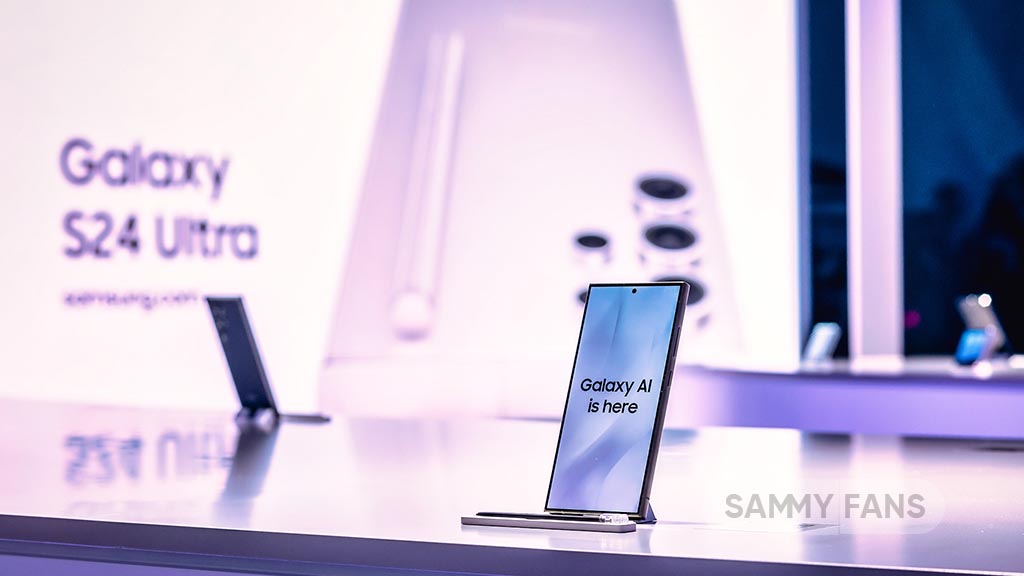
Samsung remained the king in the Q2 2024 market, but Apple and Xiaomi are getting closer. IDC market research data shows that Samsung led the worldwide smartphone market in the second quarter of the year and Chinese brands scored rapid growth.
According to IDC, Samsung sold 53.9 million devices in the second quarter. The company occupied an 18.9% market share internationally. The company has slightly improved its sales share up from 53.5 million units in the same period last year.
The data suggests that Apple ranked second in terms of global volume sales. The iPhone maker shipped 45.2 million devices in Q2, 2024. It captured a market share of 15.8%, a modest increase from 44.5 million shipments in the second quarter of last year.
Third comes Xiaomi. The Chinese brand saw massive growth in sales year over year. It had sold 42.3 million smartphones in the second quarter alone. It’s a big jump from 33.2 million units shipped in Q2 2023, becoming a potential threat to Apple and Samsung.

Apart from this, Vivo also recorded significant growth in the global market. The company’s year-over-year growth in Q2 was 21.9%, with sales listing 25.9 million units with a market share of 9.1%. The growth percentage shows that aggressive marketing and boasting competitive specs into devices is paying off.
Samsung, Apple’s game isn’t over…
Last week, Samsung launched its new foldable phones, releasing on July 24, 2024. Apple, on the other hand, is expected to launch new flagship iPhones in September. It means, Samsung will enjoy the third quarter as well. The fourth quarter might be of Apple as iPhone sales would sharply grow in the global market given the new lineup release.
Samsung is now preparing to unveil new FE products later this year, followed by the S25 series in early next year. Chinese brands are expected to debut their latest flagships in the last quarter of this year, while Google Pixel phones are also coming in August.
Business
Samsung expects massive profit boom in Q2 given AI rise
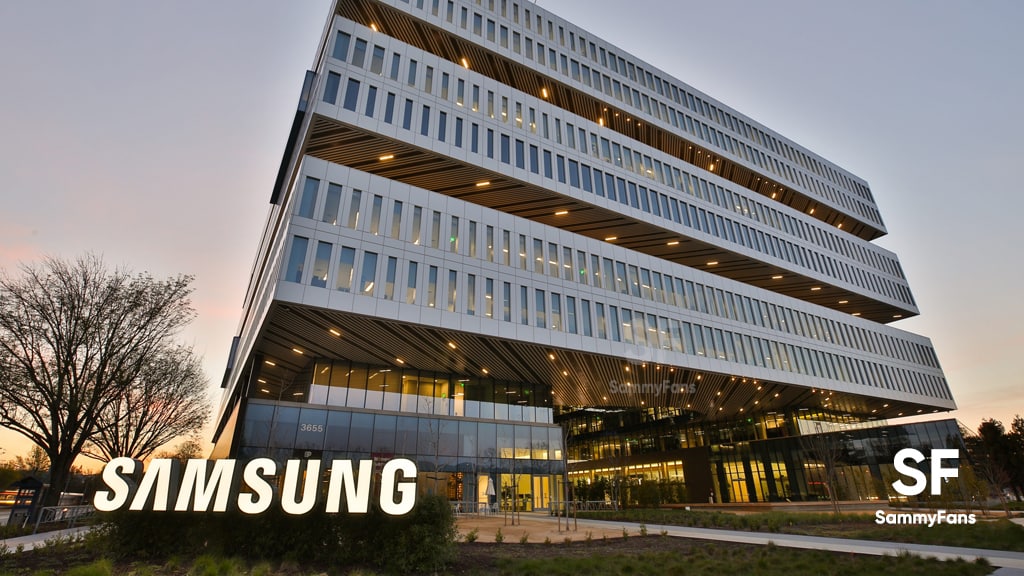
Samsung today announced provisional sales and profit results for the second quarter. Samsung formally announced the provisional/predicted sales and operating profit, suggesting a massive profit boom in Q2, 2024 given the AI memory semiconductor rise.
In Q2, 2024, Samsung sales provisionally increased by 2.89% and operating profit by 57.34% compared to the previous quarter thanks to AI boom. Besides, the sales climbed by 23.31% and operating profit by 1,452.24% compared to the same period last year.
The company expects sales of 74 trillion won and operating profit of 10.4 trillion won on a consolidated basis. While these results are not final, there won’t be much change in the final result when it comes out. Samsung had a pretty profitable period in the second quarter.
Samsung in Q2
- Consolidated Sales: Approximately 74 trillion Korean won
- Consolidated Operating Profit: Approximately 10.4 trillion Korean won
The Korean tech giant is currently facing yield issues in its second-generation 3nm process. The flagship Exynos processor is unlikely to be commercialized this year. It would lead the Mobile business to face additional burdens due to rising prices of Snapdragon chipsets.
Meanwhile, Samsung is focussing on HBM (high bandwidth memory) semiconductors. HBM is a key player in artificial intelligence servers and data centers. The booming AI market will directly benefit Samsung’s semiconductor business.
Business
Samsung leads Q3 smartphone market, Huawei’s entry haunts Apple
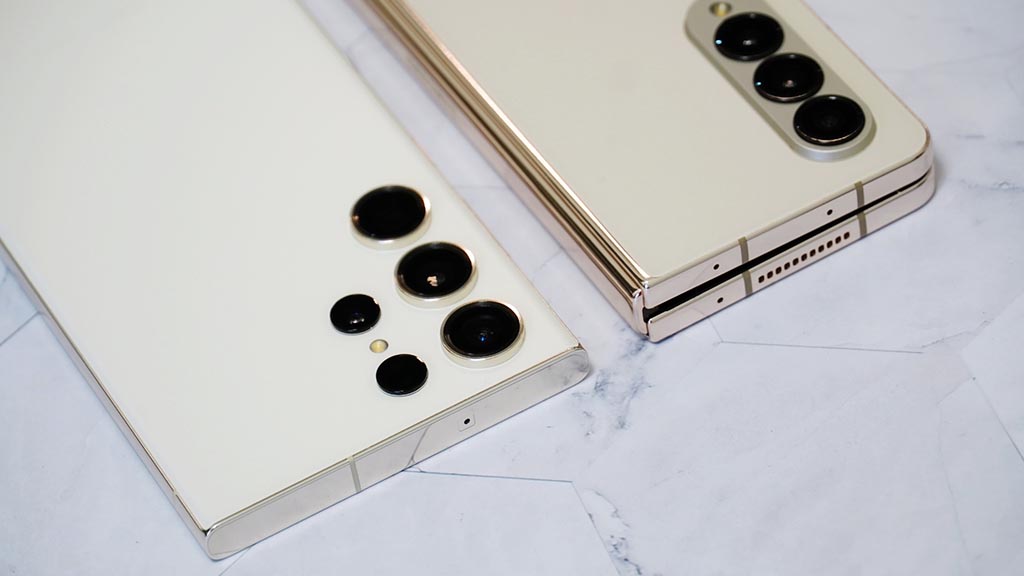
Samsung ranked first in market share in the global smartphone market in Q3, 2023. TrendForce report says that Samsung led the global Q3 smartphone market, recording a market share of 19.5%.
Overall production in the third quarter increased by 11.5% compared to the previous quarter to 60.1 million units. During the same period, Apple’s production increased by 17.9% to 49.5 million, thanks to iPhone 15.
Follow our socials → Google News | Telegram | X/Twitter | Facebook | WhatsApp
Third place was taken by Xiaomi (13.9%), followed by Oppo (12.6%) and Transion (8.6%). 6th place is Vivo (8%). Meanwhile, global smartphone production reached 308 million units, a 13% increase compared to the previous quarter and a 6.4% increase from the previous year.
Huawei’s re-entry into the flagship smartphone market targeting Apple has had a significant impact in China. Huawei is aiming to expand its high-end flagship series, focusing on the Chinese domestic market next year, so Apple “We plan to attack directly”.
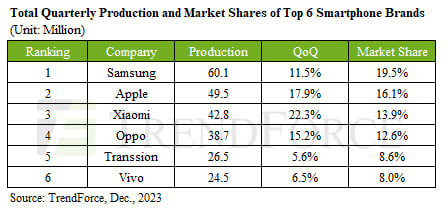
// Source









